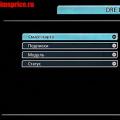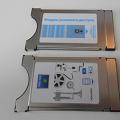How to save an account in 1s Excel. Tricks of saving a spreadsheet document in Excel for further work with it. Getting Information Using the Query Console
The need to save an Excel file from 1C arises for accountants and other employees working with both applications. To transfer data manually by copying or manually entering from the keyboard is too long, so the question of modern methods arises. The developers took care of this and provided clear ways to copy data in both directions. All the user needs is to know these methods.
How to upload files from 1C
A convenient option for transferring information from 1C is unloading. This does not require copying data through the clipboard, everything is simpler:
The user opens the file in the 1C program;
It remains to select the desired location on the computer or on a removable disk, where the file will be sent, and the format of this file. If the question is how to save in Excel, then the XLSL format is selected.
This option does not take much time and helps to programmatically transfer large files to Excel.
When you need to act in the opposite direction, uploading Excel files to the 1C system, this is done in two ways.
How to send files from Excel to 1C manually
One of the manual ways is copying through the clipboard. The data is highlighted in the Excel document and the usual combination of Ctrl + C - Ctrl + V is transferred to the 1C database. It is important to ensure that the formatting does not get lost during the transfer and that all the data gets into the right cells.
The second way is loading, the reverse of unloading. The user again goes to the "File" menu in the 1C system and selects the "Download" function, after which he finds the file on the computer. Loading takes a little time, usually a few seconds, but longer for large files. It is strongly recommended to check the format for failures and errors so that they do not take root into the general base and do not cause confusion.
How to send files from Excel to 1C automatically
Copying information from 1C 77 to an Excel document is relatively rare. This is typical for cases when you need to print a report or provide separate invoices to superiors or counterparties. Backloading data from Excel to 1C is more common, because it is necessary for collecting and summarizing data.
In order not to do everything manually and not waste time on this, a company can order a special loader, with the help of which data will be received and processed without the participation of personnel. The downloader is not a complex software product, but the problem is that it needs to be customized to the needs of a particular company. Therefore, you won’t be able to download it from free access on the Internet, you will need the help of a specialized company that will develop a bootloader and implement it for the company.
Before you start using such a bootloader, it is advisable to check three points.
How correctly it transmits data. It happens that the program works with errors, in this situation it is better to immediately detect this and make adjustments than to deal with a lot of unreliable numbers later. After implementation, the developer is responsible for checking the stability of the program, but the company's staff must also check the correctness of the transfer at first, until there is confidence that everything is in order.
Do all devices have a bootloader installed. The omission of individual computers and employees working on them is unacceptable when forming a common database, because they can cause leakage of both information and company funds. The introduction of automation for a company always involves complexity.
Before sending a copy of data from Excel to 1C, great attention should be paid to the uniform filling of Excel cells. In cases where this is done carelessly, employees confuse the order of the cells, enter data from two to one and do not follow the rules for abbreviations, serious problems will also be found in the 1C database. The head of the enterprise or the chief accountant must carry out serious work with employees before introducing business automation using 1C. Compliance with all the rules for filling out reports and maintaining a database will later help to avoid many difficulties and inaccurate data, speed up the business and take it to a new level, overtaking competitors.
If the "Save" and "Save As" buttons of the "File" menu are inactive when saving the printed form of a document or report, this means that the table protection flag is set. To disable it, disable the checkbox "Prohibit editing tables" (menu "Tools" - "Configuration settings" - tab "Auxiliary"). After that, you need to re-create the printed form of the invoice - saving to a file will be available.
Prohibition of table editing is used to exclude the possibility of falsification of data of primary documents by personnel, as it does not allow disabling the "View Only" mode, as well as copying a table or saving it to a file. Therefore, in a typical configuration, only an employee with the rights "Administrator" or "Manager" can remove the prohibition of editing tables.
We are found: how to save reporting in excel in 1 s 8 3, how to configure in the program 1s 8 3 find the button save as how to save an invoice from 1s in excel, 1s is not available to save as, 1s 7 7 is not available to save as, how to save waybills from 1s in excel so that the columns do not go astray, how to save documents in excel format in 1s 8 2, 1s 7 7 does not save report in excel, how to save a consignment note from 1s, to 1s 8 2 printing functions and saving printables are not available printer icon is inactive
It was a small discovery for me that 1C users do not know how to quickly upload almost any data from 1C to Excel. Recently, I came across what colleagues did, and then through FineReader they converted data into text from a picture, because the save to 1C button did not work (see picture). Long way, isn't it? But there are also more convenient ways. There is no secret in unloading from 1C, there are a lot of opportunities.
Let's look at the points how we can save data from 1C to Excel:
The easiest way to save data from 1C to Excel is to select one cell in a document or journal and click (copy), then in Excel select the cell where you want to save the data and click v. This way you will save the contents of this cell. For the picture example, this would be 42,289.23
This method is valid for any version of 1C.
2. How to unload a large amount of data from 1C to Excel?
The previous method is good, but you won't accumulate a large amount of data that way. Therefore, it is better to use the Display List tool.
In almost any document journal, reference book, or document, right-click and find List View.

For versions 8.3 and the Taxi interface, the button to display the list is in the More menu 
A list of these elements will appear as text (maybe before that you will need to choose which columns to select). This text can already be copied into any document. But I advise you to use the menu File - Save as (because large amounts of data will be processed for a long time and an error is not ruled out when copying to the clipboard).

Then select the desired file format.
All files are saved in the correct format.
This method also works for any version of 1C.
For version 1s 8.2 and higher in the thin client or Taxi interface, the File - Save As tool is available on the panel in the upper right corner as a floppy disk

3. How to unload printed forms of documents from 1C to Excel?
Printable documents such as
1 - Remove the View Only button to be able to change the printable 2 - Save the document in the desired format, see point 2 As well as the contents of the printed form, you can save as any text data, as in Word'e. Often a printable or report form can be saved with a simple Copy-Paste to Excel. How to download data from Excel to 1C is a completely different story. But I'll tell you soon, stay tuned ;)
For further work with the data obtained in a spreadsheet document from the 1C system of any version, they can be saved in the xls (x) format.
Everything would be fine, but when opened in Excel-e, the user immediately understands that something is wrong with the table, well, yes, there are no book sheet labels. %)
So it was in the 7th version of 1C and migrated to the 8th, yes, there is progress, in 8-ke you can save in the format xlsx, the native format of recent versions of Excel-i.
To solve the problem, there are several simple manipulations, the first thing that comes to mind for any user is to resave the table in a different format, but even here there is no desired result, then we start copy-pasting into a new book Excel.
There is another option, as it were for advanced users, is to go to the settings Excel and in the Advanced section check the box "Show sheet labels". It is correct, but also routine, in light of the frequent processing of data received from 1C in the form of flat tables and further data analysis in the form of pivot tables and other ways of presenting data in Excel.
I myself got stuck in the same way running on the checkboxes and solved the problem, rummaging through the Internet, for example, and looking at some other developments, it turned out to implement a simple (for some it's a button accordion, for some it's a crutch, however, they don't argue about tastes) automation mechanism solving the problem with displaying sheet labels.
All you need is to use two properties of the Excel window:
DisplayWorkbookTabs // flag for displaying book sheet tabs TabRatio // ratio of the width of the workbook tab area to the width of the window's horizontal scroll bar (as a number between 0 (zero) and 1, default value 0.6)
TabDocument.Write(FullFileName, FileTypeSpreadDocument.XLS); Excel = New COMObject("Excel.Application"); Excel.WorkBooks.Open(FullFileName); Excel.Visible = 0; Excel.ActiveWindow.DisplayWorkbookTabs = 1; Excel.ActiveWindow.TabRatio = 0.6; FullName = Excel.ActiveWorkbook.FullName; Excel.DisplayAlerts = false; Excel.ActiveWorkbook.SaveAs(FullName, 18); // 18 - xls 97-2003; 51 - xlsx 2007-2013 //Excel.Visible = 1; // if you need to work further with the book
//Excel.Application.Quit() // if we just quit
TabDocument.Write(FullFileName, "XLS"); Excel = CreateObject("Excel.Application"); Excel.WorkBooks.Open(FullFileName); Excel.Visible = 0; Excel.ActiveWindow.DisplayWorkbookTabs = 1; Excel.ActiveWindow.TabRatio = 0.6; FullName = Excel.ActiveWorkbook.FullName; Excel.DisplayAlerts = false; Excel.ActiveWorkbook.SaveAs(FullName, 18); // 18 - xls 97-2003; 51 - xlsx 2007-2013 //Excel.Visible = 1; // if you need to work further with the book
//Excel.Application.Quit() // if we just quit
 Modules for digital television
Modules for digital television Tricolor TV - receiver software update
Tricolor TV - receiver software update Satellite receiver or satellite TV input ci common interface
Satellite receiver or satellite TV input ci common interface